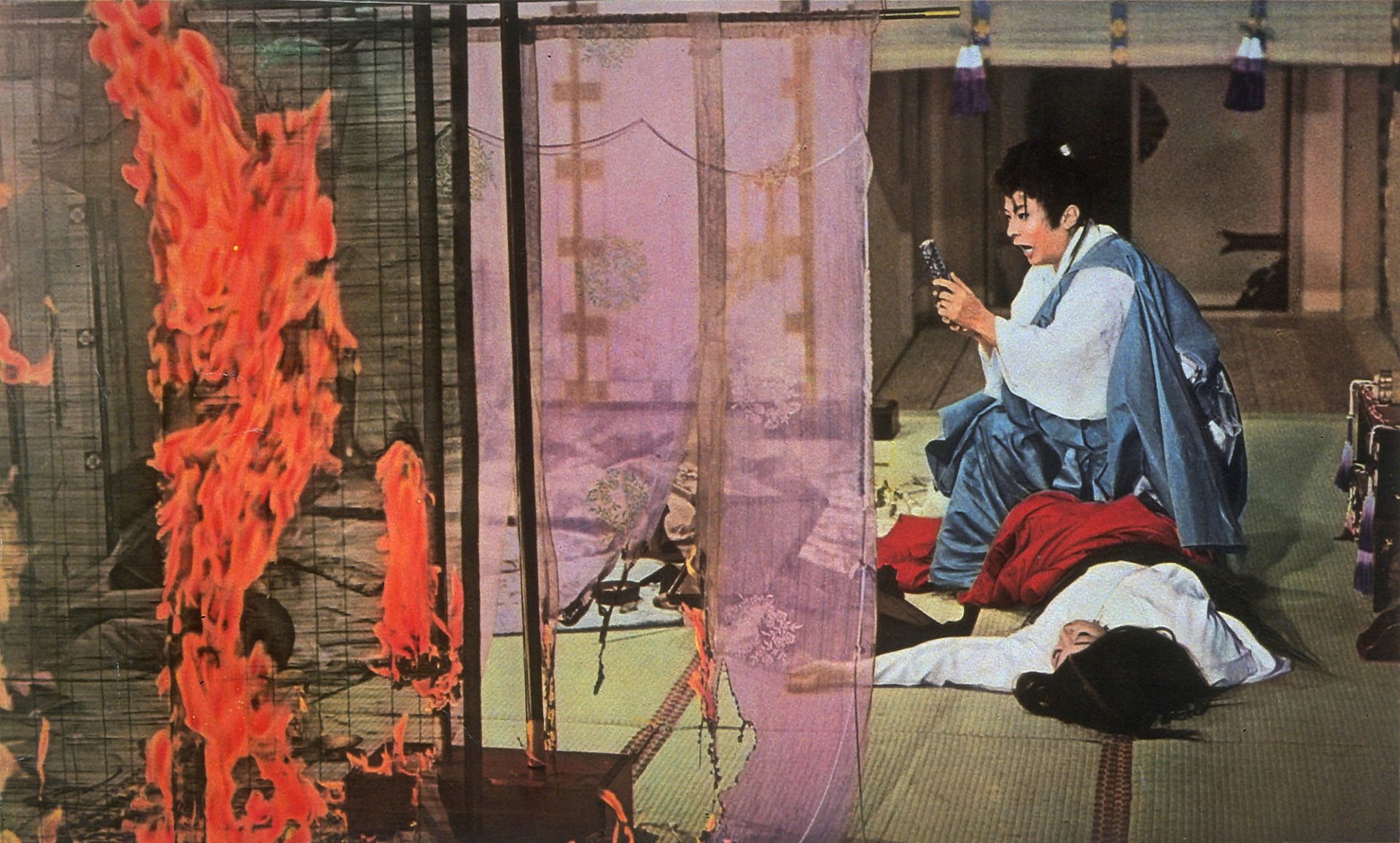This highly experimental and innovative novelty from the latter part of famed Japanese director Tomu Uchida’s career follows a crazy storyline and an even crazier method of telling it, borrowing stylistic elements from bunraku (Japanese puppet theatre), kabuki (Japanese dance drama) and even animation. It’s easy to see that the film has been adapted from a bunraku theatre piece, and while the narrative might run away with itself and the “special effects” (for want of a better term) might appear a little dated by today’s standards, there is still plenty to feast the eyes and ears on.
The movie opens in Kyoto during the Heian era (when that city was Japan’s capital, from 794 to 1185), as a white rainbow bathes the city in an ominous red light and suggests dark portents. The emperor, concerned about the unrest that may result, summons famed astronomer Yasunori (who is believed to have been a real person) to interpret the omen, but the old man is killed in mysterious circumstances before he can do so or even name an heir. The two candidates are to draw lots to decide who will take his mantle before it is revealed that the Golden Crow – a sacred scroll which can help them to say some much-needed sooth – has been stolen.
Yasunori’s wife immediately sides with one of the prospective heirs, Doman, and casts suspicions on the other Yasuna (Hashizô Ôkawa), along with the astronomer’s adopted daughter Sakaki (Michiko Saga), with whom Yasuna is in love. The pair are captured and tortured in inventive ways before Sakaki succumbs to her wounds and Yasuna loses his marbles as a result. From here, the plot begins to veer wildly all over the place in tandem with Yasuna’s fractured mind and things become increasingly confused, as Sakaki’s twin sister Kuzunoha and a white fox sprite are both mistaken by Yasuna for his departed love and both of whom fall for him in return. Throw in a couple of trippy dream sequences, a theatre-style set with moving parts (including a turntable) and some psychedelic colour schemes and you’ve got one avant-garde offering.
Despite all that, it’s a testament to Uchida’s direction and Yoshikata Yoda’s script that the audience never loses the thread of what’s happening, even if that thread might appear implausible in the extreme at times. The acting is typically melodramatic for the era and the medium but largely gets away with it apart from some indefensibly shocking attempts at manic laughter on the part of Ôkawa. But neither the performances nor the plot are the real draws here; it’s rather the staging, cinematography and unique perspectives towards the art of storytelling which both deliver that will live long in the memory.
Besides the film itself, which has been restored to an impressive 1080p resolution that really makes the colours pop, there is little else of interest on the disc. Film scholar Jasper Sharp offers a full commentary for the movie’s 109-minute runtime, which is an interesting foray into the background of Japanese cinema and gives good depth on Uchida’s career but does little to interpret the strange goings-on in the story onscreen, which wouldn’t have gone amiss. Like this commentary, the movie itself is a real feast for the dedicated lover of Japanese art, but probably a little too out there and esoteric for the casual cinema-goer.
Available on Blu-Ray from Mon 22 Jun 2020
